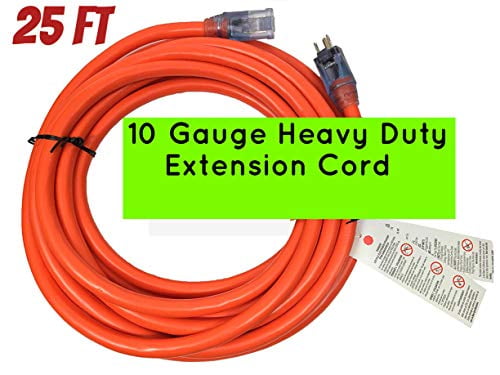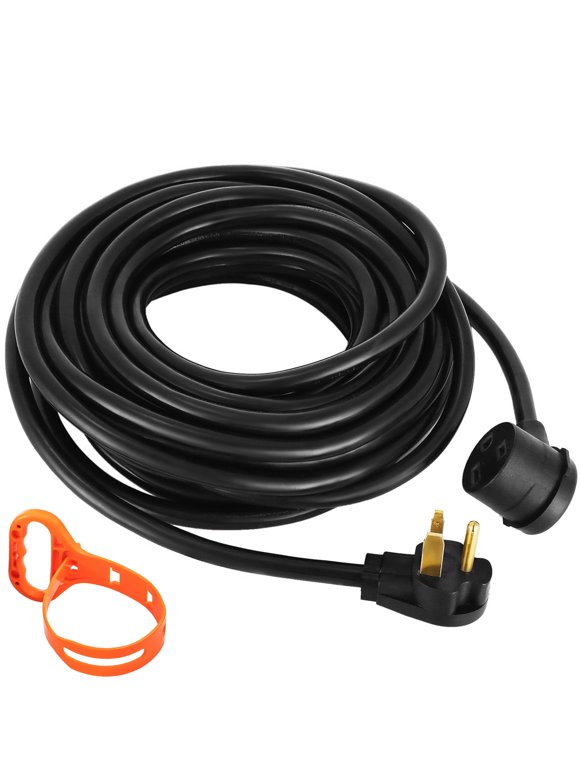3 Ft 10 Gauge Extension Cord

A seemingly innocuous household item, the 3-foot 10-gauge extension cord, has become the unlikely focal point of a growing debate surrounding electrical safety, consumer awareness, and the potential for hidden dangers in everyday products. While often perceived as a simple solution for extending power reach, experts are warning that improper use and a lack of understanding regarding its capabilities can lead to serious consequences, ranging from equipment damage to potential fire hazards.
This seemingly short length of wire, capable of handling high amperage loads, presents a unique set of challenges. This article delves into the intricacies of the 3-foot 10-gauge extension cord, examining its proper applications, potential pitfalls, and the broader implications for consumer safety in an increasingly electrified world.
Understanding the 3-Foot 10-Gauge Extension Cord
The specifications of a 3-foot 10-gauge extension cord define its intended use. The 10-gauge wiring indicates its ability to handle a significant electrical load, typically up to 20 amps, making it suitable for power-hungry appliances and tools.
The short, 3-foot length suggests a specific purpose: connecting devices requiring high amperage but located relatively close to a power outlet.
This combination of short length and high gauge is often found in applications where minimizing voltage drop is critical, such as powering heavy-duty equipment in workshops or construction sites.
Intended Applications and Benefits
The primary benefit of a short, heavy-gauge extension cord lies in its ability to deliver consistent power without significant voltage loss. Voltage drop occurs when the electrical pressure decreases as electricity travels through a wire, reducing the efficiency and performance of connected devices.
This is particularly important for motors and other inductive loads, which require a certain voltage to operate correctly and avoid overheating. Using an undersized or excessively long extension cord can starve these devices of power, leading to damage and reduced lifespan.
Therefore, a 3-foot 10-gauge extension cord is ideal for connecting appliances like refrigerators, power tools (e.g., saws, drills, compressors), and certain types of heaters that require a stable and consistent power supply.
The Potential Dangers of Misuse
Despite its utility, the 3-foot 10-gauge extension cord presents several potential dangers if misused. Overloading the cord is a primary concern.
Connecting multiple devices that collectively draw more than 20 amps can cause the cord to overheat, potentially melting the insulation and creating a fire hazard. This is especially true if the cord is coiled or covered, which traps heat.
Furthermore, using the cord in inappropriate environments can also lead to problems. Exposure to moisture, chemicals, or physical damage can compromise the cord's insulation and create a risk of electric shock.
Common Misconceptions and Risky Practices
One common misconception is that all extension cords are created equal. This is a dangerous assumption, as different cords are designed for different purposes and amperage ratings.
Substituting a thinner, longer extension cord for a 3-foot 10-gauge cord can significantly reduce the available power and potentially damage the connected device. Likewise, using the cord in a daisy-chain configuration (connecting multiple extension cords together) can overload the circuit and increase the risk of fire.
Another risky practice is using the cord as a permanent wiring solution. Extension cords are intended for temporary use only and should not be used as a substitute for proper electrical wiring.
Expert Opinions and Safety Recommendations
Electrical safety experts emphasize the importance of understanding the limitations of extension cords and using them only for their intended purpose. The National Electrical Code (NEC) provides guidelines for the safe use of electrical equipment, including extension cords.
These guidelines emphasize the importance of matching the cord's amperage rating to the device being powered and avoiding overloading circuits. Additionally, experts recommend regularly inspecting extension cords for damage and replacing them if any wear or tear is detected.
"Always err on the side of caution when dealing with electricity," advises John Smith, a certified electrician with over 20 years of experience. "If you're unsure about the correct type of extension cord to use, consult a qualified electrician."
Consumer safety organizations, such as the Consumer Product Safety Commission (CPSC), also provide resources and information on electrical safety. They highlight the importance of reading and following the manufacturer's instructions for all electrical appliances and extension cords.
According to a statement released by the CPSC, "Consumers should be aware of the potential hazards associated with extension cords and take precautions to prevent injuries and property damage."
The Future of Electrical Safety and Consumer Awareness
As technology continues to advance and our reliance on electrical devices grows, the importance of electrical safety and consumer awareness will only increase. Manufacturers and regulatory agencies are working to improve the safety standards for extension cords and other electrical products.
These efforts include developing new materials and designs that are more resistant to overheating and damage, as well as implementing stricter labeling requirements to better inform consumers about the intended use and limitations of each product.
Ultimately, however, the responsibility for electrical safety lies with the individual consumer. By taking the time to understand the potential hazards associated with extension cords and following safety guidelines, we can significantly reduce the risk of accidents and ensure a safer environment for ourselves and our families.
Increased education and accessible resources are critical to fostering a culture of electrical safety. Through collaborative efforts between manufacturers, regulatory agencies, and consumer safety organizations, we can empower individuals to make informed decisions and prevent electrical accidents from occurring in the first place.


















